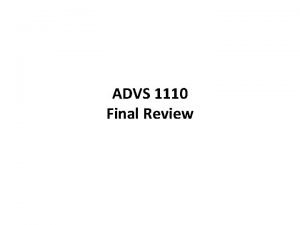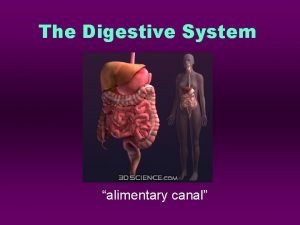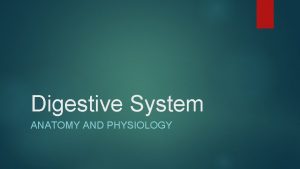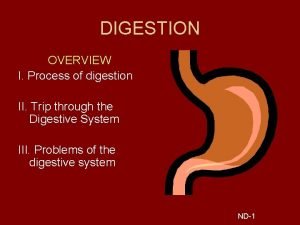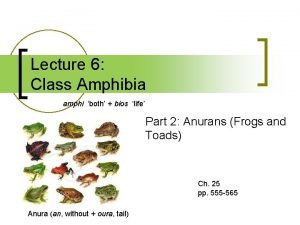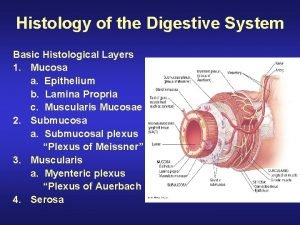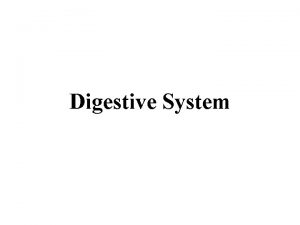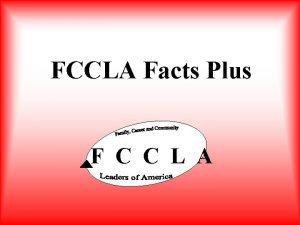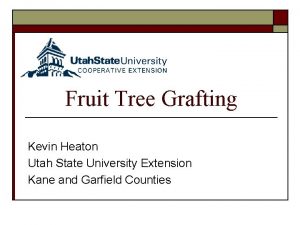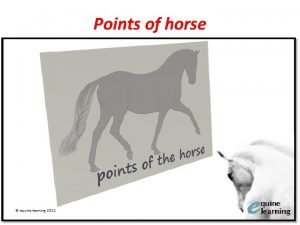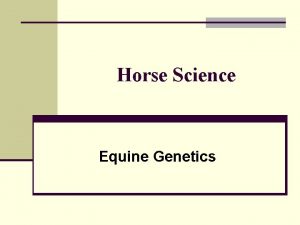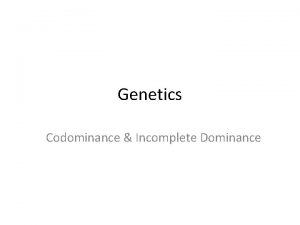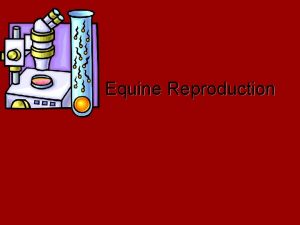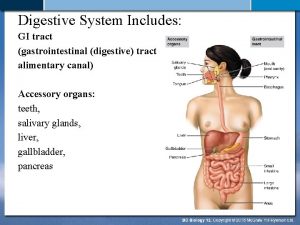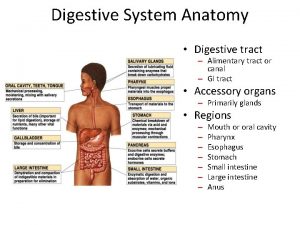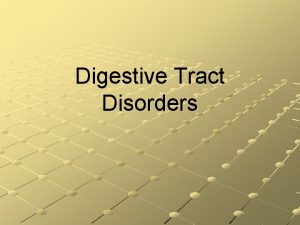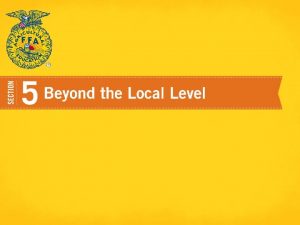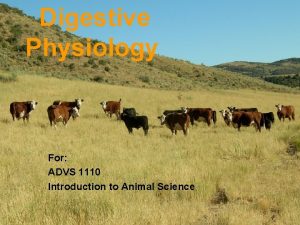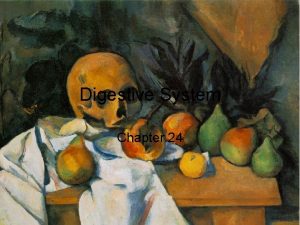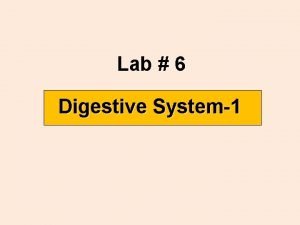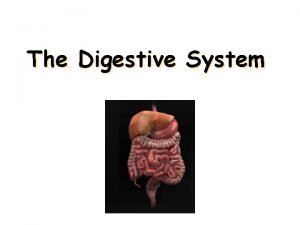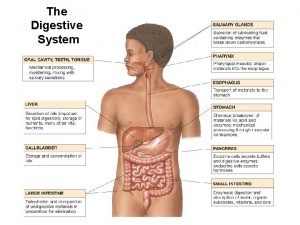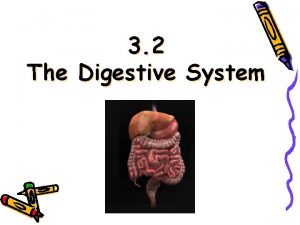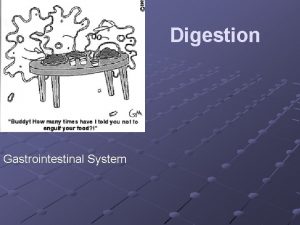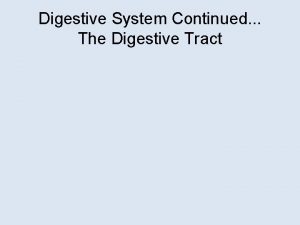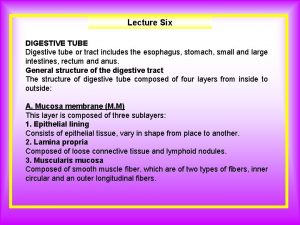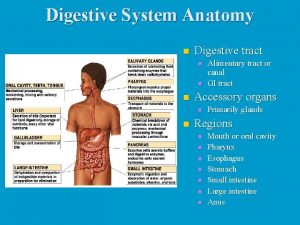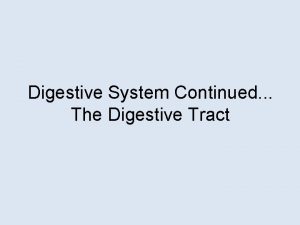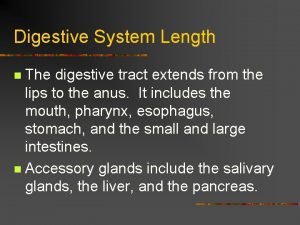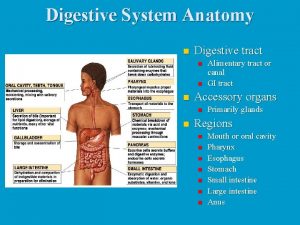Your Horses Digestive Tract Utah State University ADVS






























- Slides: 30

Your Horse’s Digestive Tract Utah State University ADVS 2190

Purpose of the Digestive Tract l Convert feed into usable energy l Not simple stomached or ruminant Combination of both l Hind-gut fermenter l

The horse’s digestive tract Herbivore l Small amounts of food passing through constantly. l l l ~100 ft long ~40 -50 gallons

Fore gut and Hind gut Fore gut l Lips l Mouth l Pharynx l Esophagus l Stomach l Small Intestine l Hind gut l Cecum l Large colon l Small Colon l Rectum l Anus l

Foregut l Responsible for Obtaining and grinding food into easily digestible pieces l Concentrate digestion and absorption l l NO FORAGE DIGESTION

Let’s start at the beginning l Lips l Mouth l Teeth l l Used to ? Saliva Lubrication l Starch > Simple sugars l How much saliva ? l

Mouth to Esophagus l Pharynx Helps guide food into the esophagus l Muscular tube ~4 -5 inches long l l Epiglottis Muscular flap that closes over the top of the trachea l Prevents food from going into the lungs l

Esophagus l Soft tube- pharynx to stomach l Different from trachea l Located where ? l Peristaltic muscular contractions + cardiac sphincter at esophagus/stomach juncture l Means a horse cannot …….

Your Horse’s Stomach Makes up 8% of digestive tract l Holds 3 – 5 gallons l l J shaped Food in stomach only short time l Breakdown of some nutrients into intermediate components l

Horse Stomach l Divided into two sections l Non-glandular l l Sensitive to acids Glandular l Protected from acids

4 Subdivisions of the Stomach Esophageal l No digestive glands l holding area for food l Cardiac l Closest to heart l Produces mucus to protect stomach l Fundic l Main body of stomach l Fundic and Gastric glands (produce enzymes, hydrochloric acid, and mucus ) l Pyloric glands, secrete mucus and small amounts pepsin l



Equine Stomach continued … l Gastric Juice produced 2. 5 -8 gallons daily l Contains mucus, pepsin, hydrochloric acid l Continuous – increases when food is present l l l Problem ? Chyme l Resulting food material leaving the stomach via pyloric sphincter

The Small Intestine l 30% of digestive tract l 65 -88 ft l long Site of breakdown and absorption l Carbohydrates l Proteins l Fats l Vitamins/Minerals


Small intestine –subdivisions l Duodenum ~3 ft l Pancreas l Liver l l Jejunum l ~65 ft l Ileum l ~5 ft

Assistants to the SI l Liver l Pancreas

Your Horse’s Large Intestine l ~60% of digestive tract l Cecum l Colon l Large colon l Small colon l Rectum Hindgut digestion of forage

Hind gut fermentation l Digests complex insoluble carbohydrates Horse alone cannot break down l Fiber l l Micro-organisms breakdown insoluble carbs via Fermentation l More than ten times number of micro-organisms in digestive tract than tissue cells in horses body

Cecum l l l 4’ long, 8 gallons Blind pouch Fermentation vat l l Bacteria, fungi, & protozoa Digestion of fiber l Water absorption l Why is a horse less efficient at digestion ?


Large Colon l l l 12’ long, 20 gallons 48 -65 hrs Absorption site for products of cecum Water Absorption 4 sections 3 flexures

Parts of the Large Colon l Right l Sternal Flexure l Left l Ventral Pelvic Flexure l Left l Ventral Dorsal Diaphragmatic flexure l Right Dorsal

View from the Top A = ileum B = cecum C = right ventral colon C. 5 = sternal flexure D= left ventral colon E= pelvic flexure F = left dorsal colon F. 5 = diaphragmatic flexure G = right dorsal colon H = transverse colon I = small colon

Small Colon l 10 -13 ft l in length Narrower than the large colon l Water absorption l Formation of fecal balls l Coated with mucus l Pass through rectum


Rectum l ~12 inches long l Still part of the colon l Short straight tube l Primarily a holding area for fecal matter. l Leads to the anus l Anus l l Sphincter that prevents fecal matter from continually dropping out of the digestive tract. Also prevents matter from entering the hind end of the digestive tract.


Digestive System review
 Advs
Advs Utah state university engineering
Utah state university engineering Pyramidal vs extrapyramidal tract
Pyramidal vs extrapyramidal tract Olivospinal tract vs tectospinal tract
Olivospinal tract vs tectospinal tract Rugae
Rugae Kingdom animalia phylum cnidaria
Kingdom animalia phylum cnidaria Function of digestive tract
Function of digestive tract Circulatory system interactions with other systems
Circulatory system interactions with other systems Where does it end
Where does it end Alimentary canal tunics
Alimentary canal tunics Digestive tract order
Digestive tract order Digestive histology
Digestive histology General structure of digestive tract
General structure of digestive tract Small intestine histology
Small intestine histology Hold your horses idiom meaning and sentence
Hold your horses idiom meaning and sentence Utah ombudsman
Utah ombudsman University of utah financial and business services
University of utah financial and business services University of utah
University of utah Uupm university of utah
Uupm university of utah Utah state insect
Utah state insect Utah state abbreviation
Utah state abbreviation Antonyms for fccla
Antonyms for fccla What is utahs state animal
What is utahs state animal What is the utah fccla state theme this year
What is the utah fccla state theme this year Utah state pronunciation
Utah state pronunciation Utah state extension fruit trees
Utah state extension fruit trees Points of horse
Points of horse Herda gene in horses
Herda gene in horses Practice codominance and incomplete dominance
Practice codominance and incomplete dominance Where is a horses vagina
Where is a horses vagina The horses by ted hughes summary
The horses by ted hughes summary
